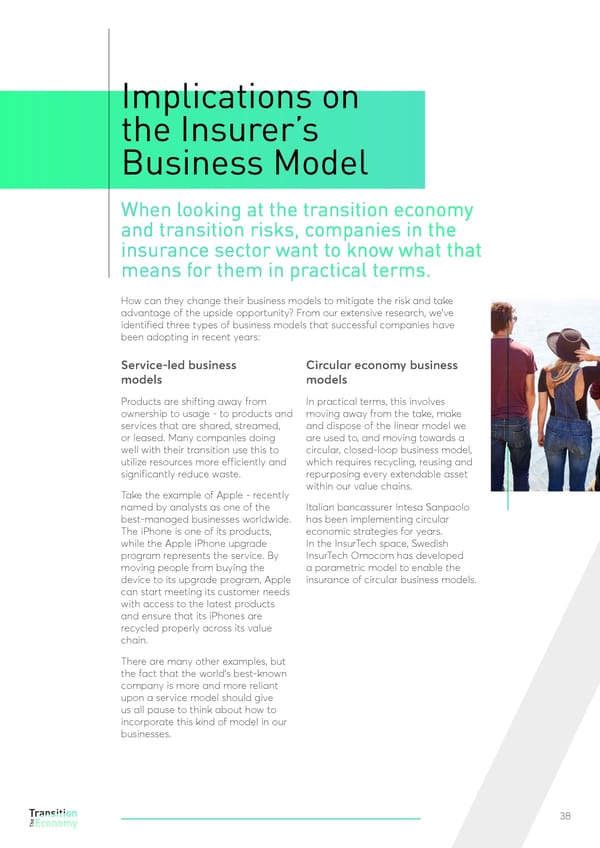Implications on the Insurer’s Business Model When looking at the transition economy and transition risks, companies in the insurance sector want to know what that means for them in practical terms. How can they change their business models to mitigate the risk and take advantage of the upside opportunity? From our extensive research, we’ve identified three types of business models that successful companies have been adopting in recent years: Service-led business Circular economy business models models Products are shifting away from In practical terms, this involves ownership to usage - to products and moving away from the take, make services that are shared, streamed, and dispose of the linear model we or leased. Many companies doing are used to, and moving towards a well with their transition use this to circular, closed-loop business model, utilize resources more efficiently and which requires recycling, reusing and significantly reduce waste. repurposing every extendable asset Take the example of Apple - recently within our value chains. named by analysts as one of the Italian bancassurer Intesa Sanpaolo best-managed businesses worldwide. has been implementing circular The iPhone is one of its products, economic strategies for years. while the Apple iPhone upgrade In the InsurTech space, Swedish program represents the service. By InsurTech Omocom has developed moving people from buying the a parametric model to enable the device to its upgrade program, Apple insurance of circular business models. can start meeting its customer needs with access to the latest products and ensure that its iPhones are recycled properly across its value chain. There are many other examples, but the fact that the world’s best-known company is more and more reliant upon a service model should give us all pause to think about how to incorporate this kind of model in our businesses. 38
 The Transition Economy High Res Page 37 Page 39
The Transition Economy High Res Page 37 Page 39